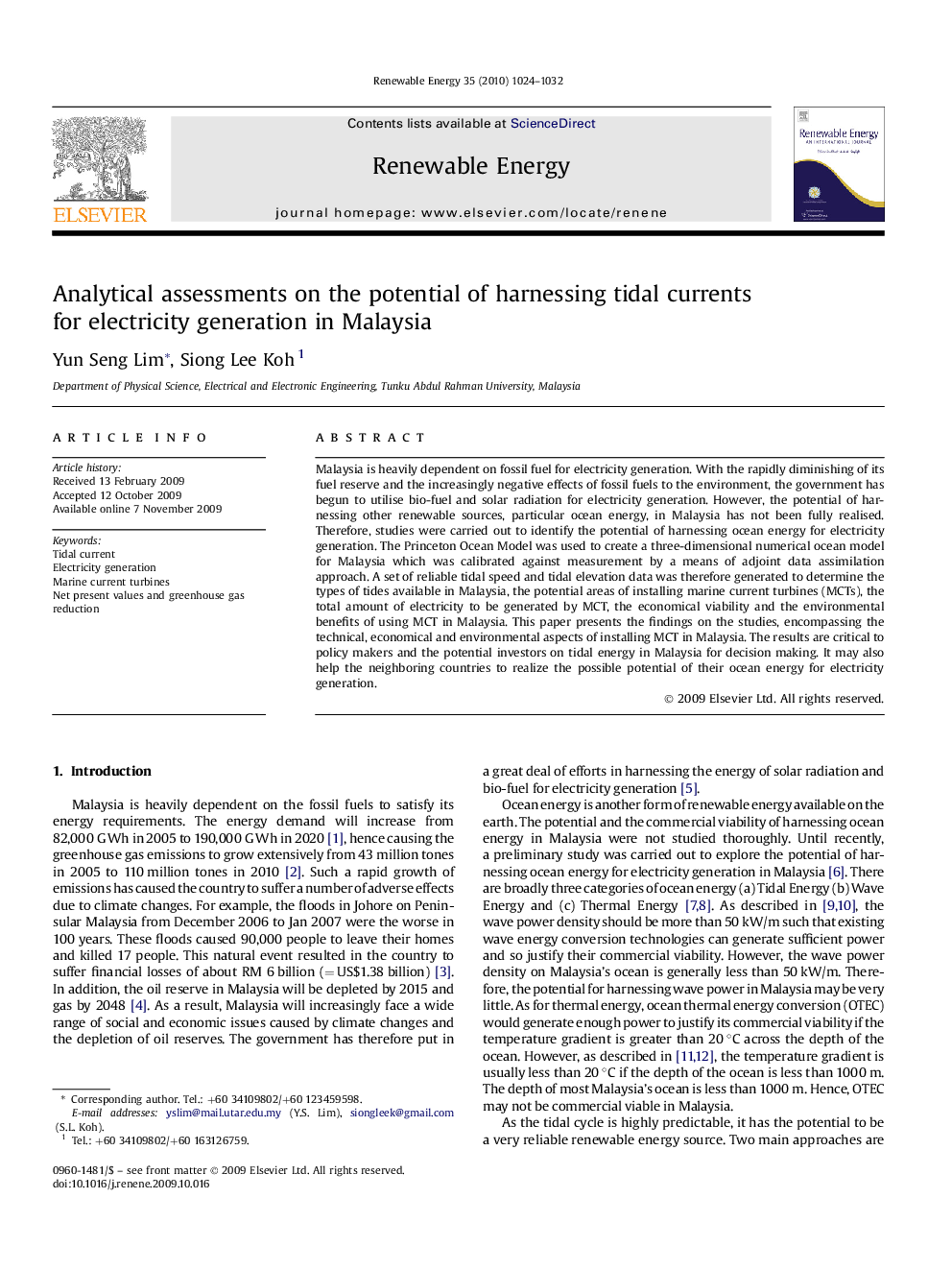| Article ID | Journal | Published Year | Pages | File Type |
|---|---|---|---|---|
| 301953 | Renewable Energy | 2010 | 9 Pages |
Malaysia is heavily dependent on fossil fuel for electricity generation. With the rapidly diminishing of its fuel reserve and the increasingly negative effects of fossil fuels to the environment, the government has begun to utilise bio-fuel and solar radiation for electricity generation. However, the potential of harnessing other renewable sources, particular ocean energy, in Malaysia has not been fully realised. Therefore, studies were carried out to identify the potential of harnessing ocean energy for electricity generation. The Princeton Ocean Model was used to create a three-dimensional numerical ocean model for Malaysia which was calibrated against measurement by a means of adjoint data assimilation approach. A set of reliable tidal speed and tidal elevation data was therefore generated to determine the types of tides available in Malaysia, the potential areas of installing marine current turbines (MCTs), the total amount of electricity to be generated by MCT, the economical viability and the environmental benefits of using MCT in Malaysia. This paper presents the findings on the studies, encompassing the technical, economical and environmental aspects of installing MCT in Malaysia. The results are critical to policy makers and the potential investors on tidal energy in Malaysia for decision making. It may also help the neighboring countries to realize the possible potential of their ocean energy for electricity generation.
